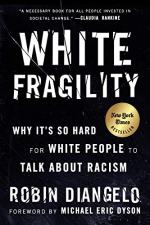
|
| Name: _________________________ | Period: ___________________ |
This test consists of 15 multiple choice questions and 5 short answer questions.
Multiple Choice Questions
1. Who said, "if privilege is defined as a legitimization of one’s entitlement to resources, it can also be defined as permission to escape or avoid any challenges to this entitlement” (112).
(a) Robin Diangelo.
(b) Singer Cher.
(c) Professor of social work Rich Vodde.
(d) Author Toni Morrison.
2. What does Diangelo say Mr. Roberts and his colleague were unable to do?
(a) Separate intention from impact.
(b) Swallow their pride.
(c) Be nice to kids.
(d) See color.
3. How do white people ineffectively apologize for their racism, as stated by Diangelo in Chapter 9?
(a) By stating that the victim is too sensitive.
(b) By stating that the harm they inflicted was not intended.
(c) By stating that they did not know any better.
(d) By stating that they meant something else.
4. What is one more function of white fragility, according to Chapter 9?
(a) To please people of color.
(b) To trivialize the reality of racism.
(c) To challenge white people.
(d) To hurt people of color on purpose.
5. When does whiteness exist according to Coates?
(a) Only in the presence of non-whiteness.
(b) Everywhere.
(c) Only in the presence of blackness.
(d) Only in our hisory books.
6. Where is the highest level of segregation according to a 2015 study?
(a) Between blacks and Latinx people.
(b) Between blacks and Asians.
(c) Between blacks and whites.
(d) Between whites and Asians.
7. What did Eva say she learned about race in Germany?
(a) Lots of things.
(b) Nothing.
(c) Only some things.
(d) One or two things.
8. What does Diangelo say happens to people of color when people cry white tears?
(a) They are hated.
(b) They are virtually ignored.
(c) They are comforted.
(d) They are loved.
9. Who are corporations more likely to favor regarding affirmative action, as stated in Chapter 6?
(a) White men.
(b) White women.
(c) People of color.
(d) Immigrants of eilte backgrounds.
10. What does Diangelo believe about stopping racist patterns?
(a) That it is more important then trying to convince others they do not exist.
(b) It is imporant but less so than climate change.
(c) It is more important than climate change.
(d) It is not that important.
11. What is capital, as stated in Chapter 7?
(a) A social construct.
(b) The social value people hold in a particular field.
(c) Monetary value.
(d) A city in a state.
12. What happens when whites employ terms that connote physical violence to describe their feelings toward being challenged, as stated in Chapter 8?
(a) They are harmful to other white people.
(b) They subject themselves to danger from other whites.
(c) They distort the real direction of danger between whites and others.
(d) They subject themselves to ridicule.
13. According to Diangelo, what tends to happen when people of color give white people feedback on their racist actions?
(a) Sometimes it goes well, sometimes it does not.
(b) People of color never confront white people.
(c) It does not go over well.
(d) It usually goes over well.
14. Diangelo believes tears driven by white guilt are what?
(a) Pathetic.
(b) Self-indulgent.
(c) Normal.
(d) Inevitable.
15. Where do we see anti-black sentiments in our daily lives, as stated in Chapter 6?
(a) Everywhere.
(b) Nowhere.
(c) Only in predominatly white spaces.
(d) Only in predominantly black spaces.
Short Answer Questions
1. Who is known for crying white tears the most?
2. What are white tears?
3. What does Diangelo write is one very common claim white people use when challenged about racism?
4. What do white racial assumptions and behaviors do, according to Diangelo in Chapter 9?
5. What specific words do whites use to describe their feelings in the face of being challenged on their racism, as stated in Chapter 8?
|
This section contains 638 words (approx. 3 pages at 300 words per page) |

|




